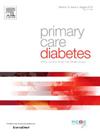2型糖尿病患者跨部门护理的连续性:丹麦的一项全国性登记研究
IF 2.6
4区 医学
Q3 ENDOCRINOLOGY & METABOLISM
引用次数: 0
摘要
目的:我们的目的是描述2型糖尿病(T2D)患者的医疗保健利用模式,并确定与低连续性护理相关的患者特征。方法:一项全国性的基于登记的队列研究,包括2017年诊断为T2糖尿病的所有丹麦公民。结果是通过三个不同的指数来衡量护理的连续性:护理的连续性指数(COCI),通常的护理提供者指数(UPC)和顺序连续性指数(SECON)。结果:T2D患者的中位数有75% %与他们通常的卫生保健提供者接触。与低护理连续性的最强关联是合并症的数量,呈现剂量反应趋势。与低连续性护理相关的其他患者特征是T2糖尿病病程(bb0 10.3年)、年龄较小(40-49岁)、教育程度较高(bb1 15年)和有癌症合并症。结论:我们的研究是第一步,以标记患者的潜在风险碎片化护理,由于许多转换之间的提供者。这对全科医生很重要,因为他们是T2D患者及其各种健康状况和接触者的协调者。本文章由计算机程序翻译,如有差异,请以英文原文为准。
Continuity of care across sectors in patients with type 2 diabetes: A nationwide register study in Denmark
Aims
Our aims were to describe health care utilisation patterns across sectors in patients with type 2 diabetes(T2D), and to identify patient characteristics associated with low continuity of care.
Methods
A nationwide register-based cohort study including all Danish citizens recorded with a diagnosis of T2 diabetes in 2017. The outcome was continuity of care as measured by three different indices: the Continuity of Care Index (COCI), the Usual Provider of Care Index (UPC), and the Sequential Continuity Index (SECON).
Results
The median of patients with T2D had 75 % of their contacts to their usual health care provider. The strongest association with low continuity of care was the number of comorbidities, showing a dose response trend. Other patient characteristics associated with low continuity of care were duration of T2 diabetes (>10.3 years), lower age group (40–49 years), having a high education level (>15 years) and having a cancer comorbidity.
Conclusions
Our study was the first step to flag patients at potential risk of fragmented care due to many transitions between providers. This is of importance for the general practitioners, who are the coordinators of the patients with T2D and their various health conditions and contacts.
求助全文
通过发布文献求助,成功后即可免费获取论文全文。
去求助
来源期刊

Primary Care Diabetes
ENDOCRINOLOGY & METABOLISM-PRIMARY HEALTH CARE
CiteScore
5.00
自引率
3.40%
发文量
134
审稿时长
47 days
期刊介绍:
The journal publishes original research articles and high quality reviews in the fields of clinical care, diabetes education, nutrition, health services, psychosocial research and epidemiology and other areas as far as is relevant for diabetology in a primary-care setting. The purpose of the journal is to encourage interdisciplinary research and discussion between all those who are involved in primary diabetes care on an international level. The Journal also publishes news and articles concerning the policies and activities of Primary Care Diabetes Europe and reflects the society''s aim of improving the care for people with diabetes mellitus within the primary-care setting.
 求助内容:
求助内容: 应助结果提醒方式:
应助结果提醒方式:


